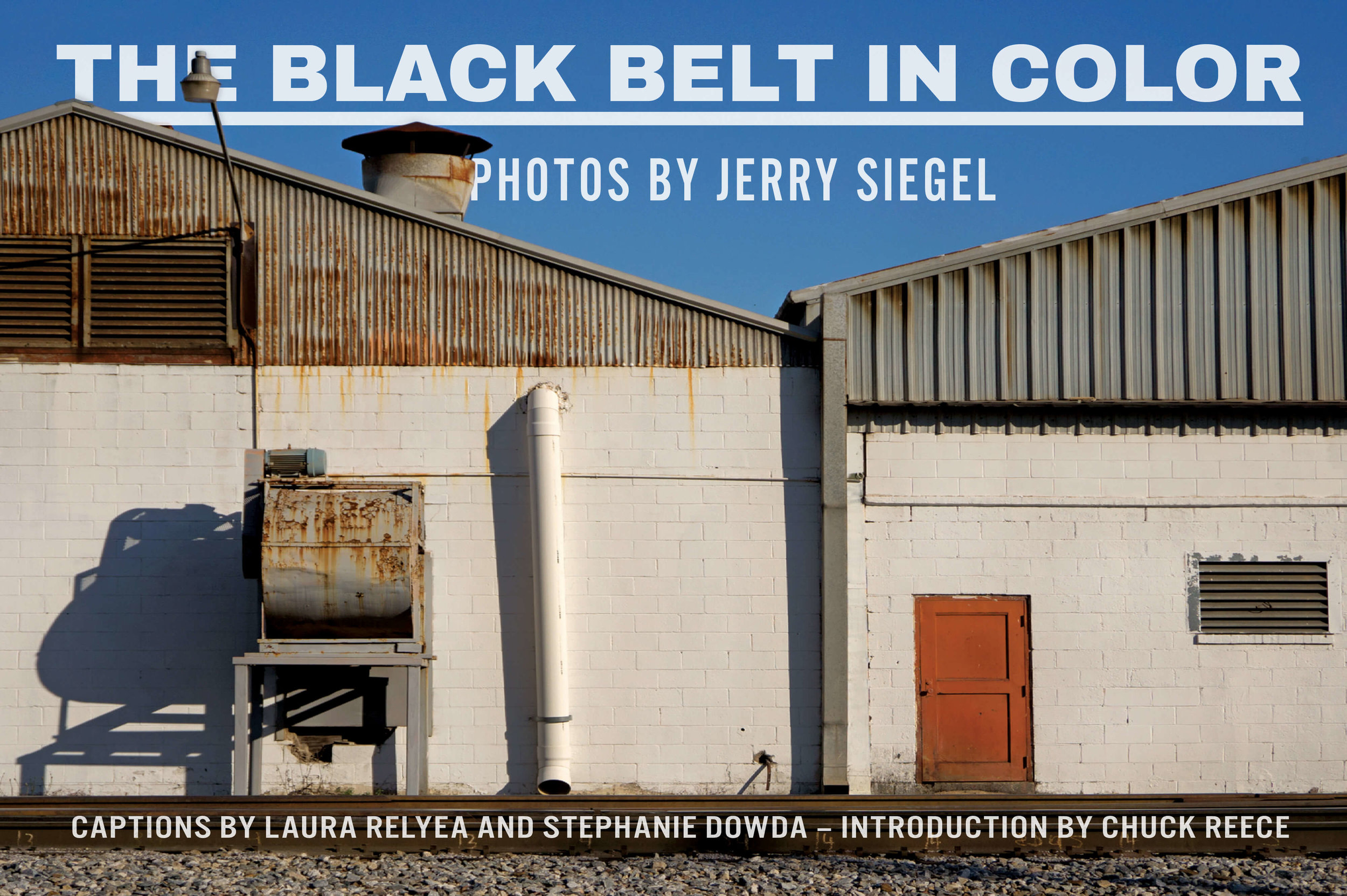For many decades, photographer Jerry Siegel has documented the land and lives of Alabama’s historic “black belt.” Today, in a collaboration between The Bitter Southerner and ArtsATL.com, we present this photo essay from Siegel’s recently published “Black Belt Color.” Concurrently, ArtsATL is running an in-depth interview with Siegel by Stephanie Dowda. Siegel’s photographs remind us vividly how Southerners see our region differently and more fully than folks from away.
Photographs by Jerry Siegel | Captions by Laura Relyea and Stephanie Dowda | Introduction by Chuck Reece
Photographer Jerry Siegel was born in Selma, Alabama, in 1958. Selma, of course, is known as the site of “Bloody Sunday,” March 7, 1965. On that day, John Lewis and other civil-rights activists from the Student Nonviolent Coordinating Committee and the Southern Christian Leadership Conference led a group of about 600 marchers across the Edmund Pettus Bridge, intending to march all the way to the capitol in Montgomery. Alabama state troopers and local police met the marchers on the bridge, beating them with clubs, spraying them with tear gas, leaving more than 50 people hospitalized.
And that day, for better or worse, supplies the images that spring to mind for people all around the world who hear the name of Siegel’s hometown.
But the South, as our readers know well, is a complex place — as are the communities within it. And for his entire career, Siegel has photographed his hometown and the geography it anchors — Alabama’s “black belt,” named such not for its large African-American population, as many people mistakenly believe, but for the richness of its soil.
The Georgia Museum of Art has just published a retrospective of Siegel’s work called “Black Belt Color.” The book is an indelible reminder that the greatest photography of the South has usually come from native Southerners, who see our region as it is, and not through the lens of stereotypes.
It is also a document of the region’s complexity. As Siegel himself says, “This isn’t a definitive view of the ‘black belt’ region. This is a very, very tight focus — images of what I respond to based on how I grew up. Every picture tells a story . . . but it never tells the whole story.” — Chuck Reece
Homecoming
Selma, Alabama
2009
“I tried to find things that were iconic, things that were landmarks for me,” says Siegel. In this image, which is the cover image for his book, Siegel captures a pivotal moment of a homecoming game at Morgan Football stadium.
Venus
Perry County, Alabama
2009
“Some of my favorite images have that sense of calmness or quietness; that’s why I like the gray days.”
Ticket Booth
Dallas County, Alabama
2007
“It’s where my father was born and raised, my grandfather was born and raised and his father was born and raised. I grew up in Dallas County and most of the work has been made in that same county.”
Joe’s Diminoes
Selma, Alabama
2005
“I started using the panoramas of some of the buildings and scenes around the area that were familiar to me. Then, I decided to take it a step further, thinking about places that were important to me growing up.”
J&R’s, Deer Heads
Perry County
2002
A close shave in Demopolis, Alabama.
Barber
Selma, Alabama
1994
Can Man
Autauga County, Alabama
1994
After the release of his first collection, Facing the South, a collection of portraits, Siegel is often categorized as a portrait photographer, though he doesn’t necessarily feel that classification is accurate. “I’d say I’m a documentary photographer,” he says. Still, Siegel has an undeniable knack for capturing inherent truth inside his subjects.
Nursing Home
Perry County, Alabama
2009
Hunter
Perry County, Alabama
2010
Boy and Dog
Perry, Alabama
2010
Relieves Fatigue
Selma, Alabama
2003
After working for years in large and medium format film cameras, Siegel has made the transition to digital photography out of necessity. “The cost of processing film is too much,” he says. But this transition to modern technology comes at a cost. “There’s a depth and sense of focus that large format film cameras give, it’s not something digital can do.”
Black Cat Fireworks
Dallas County, Alabama
2003
Johnny’s Café
Selma, Alabama
2007
Siegel’s work showcases his aptitude and sensitivity to light and color, with gold and blue weighing heavily in his color palettes.
Sitting Room
Selma, Alabama
2005
Of course, the Promised Land must have barbecue. Shot in Woodstock, Alabama, in 2009.
Tucker’s Grocery
Selma, Alabama
1994
Taxidermy and Groceries Maplesville, Alabama
2009
One of Siegel’s strengths is finding off-the-beaten-path spots and subjects to portray in his work. “Lately, I go into little stores and shops to talk to people and photograph,” he says. “I’m really pushing myself to engage.”
Lunch Meat, 99¢
Selma, Alabama
2011
Would Jesus Steal Worms
Selma, Alabama
2009
Birds
Perry County, Alabama
2002
Though he’s photographed all over the world, Siegel remains bewitched by the heart of “the black belt,” a crescent-shaped region in central Alabama where the topsoil is rich and fertile.
A view from the back porch of a house in Dallas County, Alabama, shot in 2008.
Siegel’s “House of Crosses,” shot in Autauga County, Alabama, captures the dominant role religion has always played in the South’s culture.



























